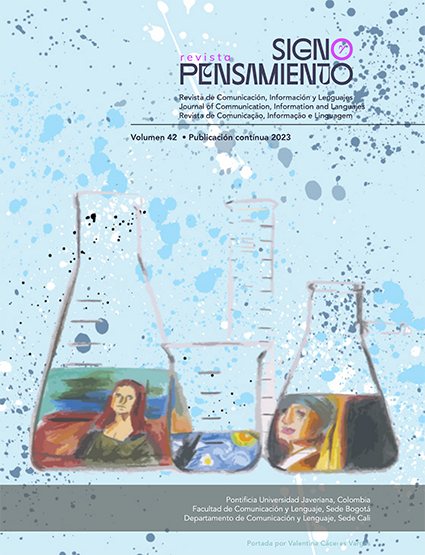Abstract
Approaching the rap of young Colombian Indigenous people has been a possibility of affectation through their rhythms, narratives of Lives and stories; mobilizing and resignifying understandings about the Indigenous as bets in tension in their conceptual imbalance itself. To do this, the self-representation policies reflected in their musical proposals were addressed, the disputes that arise from rap and the way in which to encounter them from emotions were identified. As a result, and first contribution, the IndianiRAP is theorized as an intervention as an identity process that transgresses the binarism and salvationist conceptions of indigenous subjects cataloged as pure and immovable beings.
Ahmed, S. (2015). La Política Cultural de la Emociones. Edinburgh University Press.
Altez, Y. (2015). Hermenéutica y configuración histórica de las identidades culturales. Estudios sobre las Culturas Contemporáneas, (44), 3-80.
Altieri, C. (2003). The Particulars of Rapture: An Aesthetics of the Affects. Cornell University Press.
Anzaldúa, G. (1999). Borderlands. La Frontera, The New Mestiza. Aunt Lute Books.
Blackman, L. y Cromby, J. (2007). Affect and Feeling. International Journal of Critical Psychology, 21, 5-22.
Briones, C. y Del Cairo, C. (2014). Prácticas de fronterización, pluralización y diferencia. UniversitasHumanística, 80(80), 13-52. https://doi.org/10.11144/Javeriana.UH80.pfpd
Cacopardo, A. (2018). Nada sería posible si la gente no deseara lo imposible. Entrevista a Silvia Rivera Cusicanqui. Andamios, 15(37), 179-193. https://doi.org/10.29092/uacm.v15i37.635
Frith, S. (1996). Música e identidad. En S. Hall y P. du Gay (ed.), Cuestiones de identidad cultural (pp. 181-213). Amorrortu Editores.
Grimson, A. (2011). Los límites de la cultura. Crítica de las teorías de la identidad. Siglo XXI Editores.
Guerrero, N. (2017). El impacto Nasa de John Jota, el Indio del Rap. Pacifista. https://pacifista.tv/notas/el-impacto-nasa-de-john-jota-el-indio-del-rap/
Hall, S. (1996). Introducción: ¿quién necesita «identidad»?. En S. Hall y P. du Gay (eds.), Cuestiones de identidad cultural (pp. 181-213). Amorrortu Editores.
Hansen, A. y Machin, D. (2019). Media and communication research methods. Red Globe Press.
Pratt, M. (2010a). Ojos Imperiales Literaturas de viajes y Transculturación. Fondo de Cultura Económica.
Pratt, M. (2010b). “La indigeneidad hoy. Epílogo”. En M. de la Cadena y O. Starn (eds.), Indigeneidadescontemporáneas: cultura, política y globalización. Instituto Francés de Estudios Andinos.
Reguillo, R. (2003). Políticas de representación y desafíos culturales. La visibilidad de América Latina. A renglón seguido, 53(3), 34-43.
Restrepo, E. (2012). Intervenciones en teoría cultural. Universidad del Cauca.
Restrepo, E. (2014). Sujeto e identidad. En E. Restrepo (coord.), Stuart Hall desde el sur: legados y apropiaciones (pp. 97-117). Consejo Latinoamericano de Ciencias Sociales.
Slobin, M. (1993). Subculture Sounds. Micromusic of the West. Wesleyan University Press.
Walley, C. (2015). Transmedia as experimental ethnography: The Exit Zero Projetc, deindustrialization, and the politics of nostalgia. American Ethnologist, 42(4), 624-639. https://doi.org/10.1111/amet.12160

This work is licensed under a Creative Commons Attribution 4.0 International License.
Copyright (c) 2023 German Andres Santofimio Rojas


